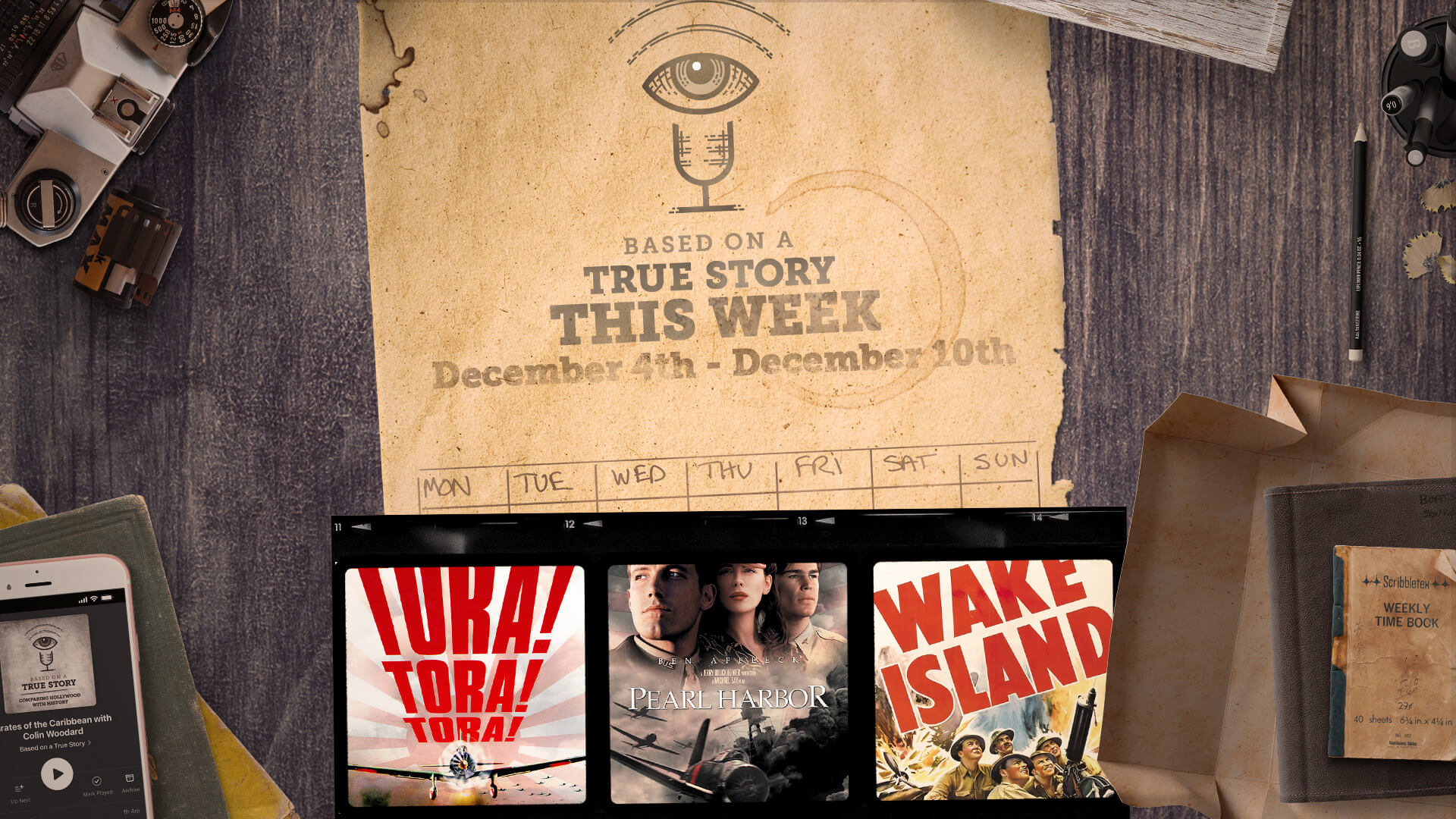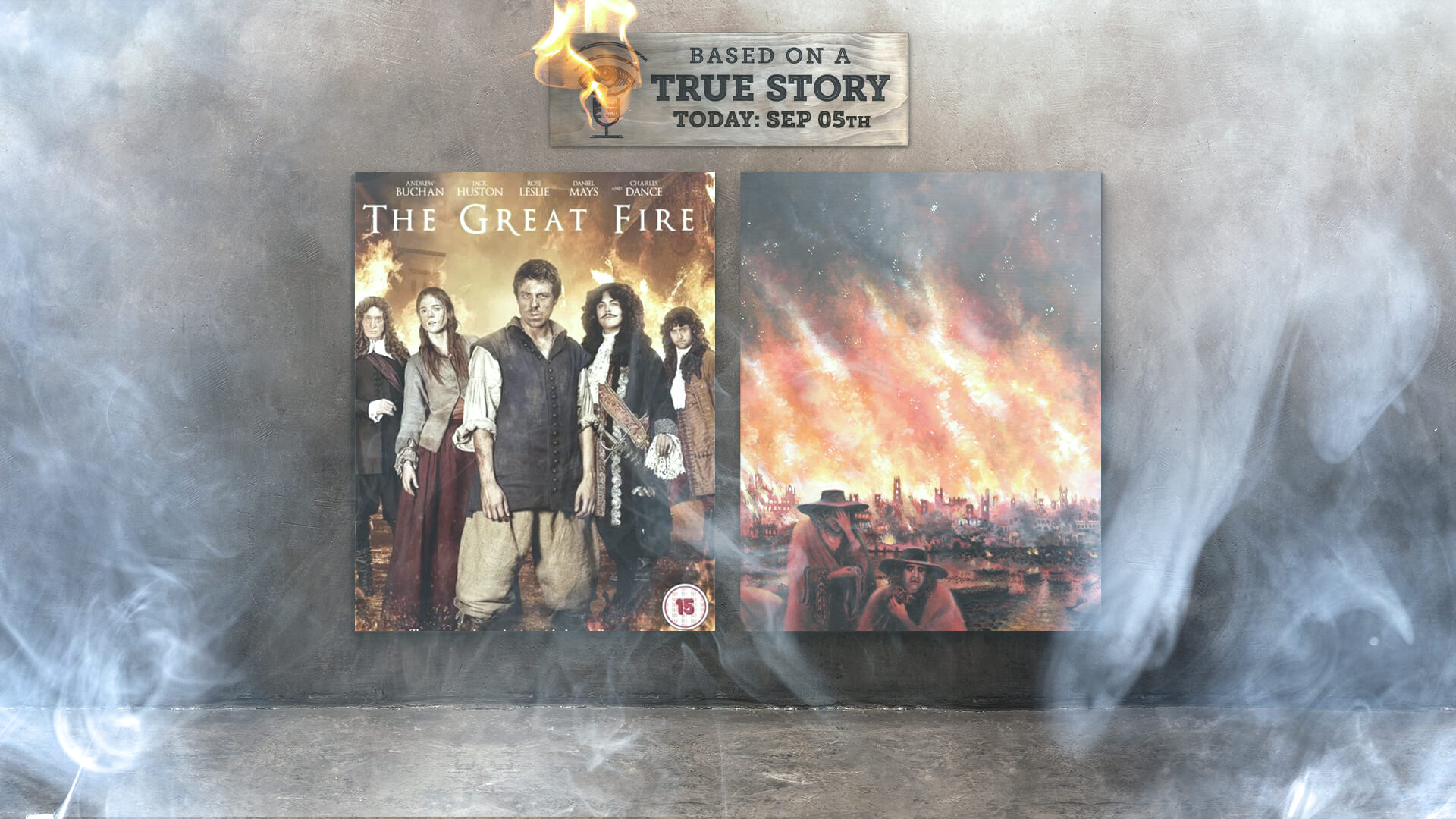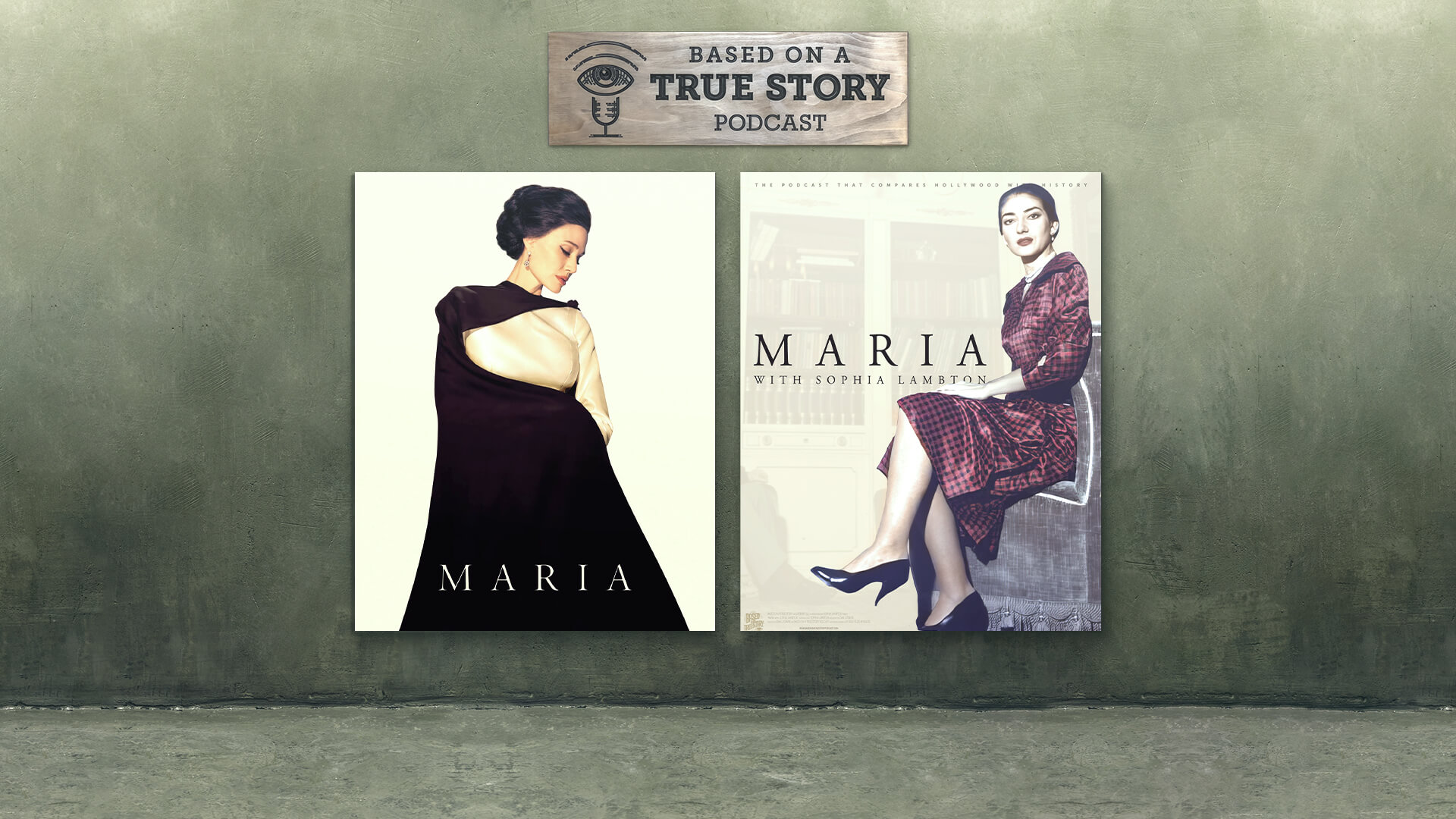In this episode, we’ll learn about historical events that happened this week in history as they were depicted in these movies: Milk, Roman Empire, and Walk the Line.
Events from This Week in History
Birthdays from This Week in History
- Frost/Nixon | BOATS #4 or All the President’s Men | BOATS #122
- The Assassination of Jesse James by the Coward Robert Ford | BOATS #166
- Turn: Washington’s Spies | BOATS #139
Movies Released This Week in History
Did you enjoy this episode? Help support the next one!
Disclaimer: Dan LeFebvre and/or Based on a True Story may earn commissions from qualifying purchases through our links on this page.
Transcript
Note: This transcript is automatically generated. There will be mistakes, so please don’t use them for quotes. It is provided for reference use to find things better in the audio.
January 9th, 1978. San Francisco, California.
The movie fades up from a black screen with the year “1978” written across it to show a crowd of people walking in slow motion. It looks like they’re walking in the middle of San Francisco, and since it’s the 1970s, they’ve got the appropriate attire for what you’d expect ordinary people to be wearing in the 1970s.
We can hear the voiceover from someone saying the words, “I, Harvey Milk, do solemnly swear.”
Then, we can hear a different voice repeating the phrase: “I, Harvey Milk, do solemnly swear.”
The first voice continues with the next line, “That I will support and defend the Constitution of the United States.”
Harvey’s voice repeats the next line, “That I will support and defend the Constitution of the United States.”
It sounds like someone is being sworn into office.
The scene on screen is still the people walking in slow motion. And now that the movie is fully faded up from the black screen, we can clearly identify two of the men walking. One of the men is the person whose voiceover we heard being sworn in, Harvey Milk, and he’s being played by Sean Penn in the movie. Harvey is wearing a suit with a blue shirt and striped tie as he’s smiling and continuing to walk in slow motion with his arm around the other readily identifiable person in this scene, Diego Luna’s character, Jack Lira.
We can hear the next line in the swearing in, “During which time that I hold the office of Supervisor, City and County of San Francisco.”
The movie cuts away from Harvey and Jack walking in the crowd to Harvey, still wearing the same suit with a striped tie that he was in the last shot. This time, though, he’s standing in front of a white building with an American flag. Jack is behind him along with a crowd of people who are watching the swearing in ceremony.
With Harvey’s right hand raised, we are seeing the visual for what we were hearing before as Harvey repeat the line we just heard, “During which time that I hold the office of Supervisor, City and County of San Francisco.”
The movie then gives us the text on screen to establish what this event is: “Supervisor Inaugurations. January 9th, 1978.”
The first voice we’ve been hearing is identified now as he finishes the inauguration by congratulating Harvey and shaking his hand. In reply, Harvey says, “Thank you, Mayor.” And just like that we know the other man is the Mayor of San Francisco, George Moscone. He’s played by Victor Garber in the movie. After the hand shake, the crowd behind Harvey starts cheering and clapping as the Mayor and Harvey turn to the flashes of reporter’s cameras documenting the historic event.
The true story behind this week’s event depicted in the movie Milk
That sequence comes from the 2008 film named after Harvey’s surname: Milk. The event it’s depicting is when Harvey Milk was inaugurated as the San Francisco City-County Supervisor this week in history on January 9th, 1978.
The movie’s portrayal of this event is a pretty good re-enactment but, of course, there’s not much to the event itself so that’s probably not too surprising. The reason why it’s historic has more to do with the context around it, rather than the event itself.
You see, when Harvey Milk was inaugurated this week in history, it marks one of the first times in United States history that an openly gay candidate won a public election.
As you can probably guess, Harvey’s road to winning the election as an openly gay candidate wasn’t an easy one. He served in the U.S. Navy as a diving instructor until 1955 when questions started to rise about him being gay. After that, he held a variety of jobs from working on Broadway musicals to the stock market to a school teacher. All the while, he faced criticism for his sexual orientation.
His path into politics started after the U.S. entered into the Vietnam War and like many people did in the 1970s, he started to protest the war. After he moved to San Francisco in 1972, Harvey opened a camera store and he started to become popular in the gay community. Then, he announced his first run for the San Francisco Board of Supervisors in 1973.
He lost that election, but continued gaining in popularity as he started organizing other LGBT business owners. He ran again in 1975, and again he lost. And again, he was growing in popularity as a voice for the gay community—which was also growing in size in San Francisco.
That brings us to one of the other characters we see in the sequence I described. I’ll briefly mention Diego Luna’s character, Jack Lira, simply because he really was one of Harvey Milk’s lovers in the 1970s. But a bigger player into Harvey’s political career was the other character that I mentioned, Victor Garber’s character, Mayor George Moscone. He was a good friend of Harvey’s, and after Harvey lost his election in 1975, Mayor Moscone appointed Harvey to San Francisco’s Board of Permit Appeals.
It wasn’t an elected position, but it still made Harvey the first openly gay city commissioner in the U.S. Two years later, in 1977, Harvey ran again and this time he won the position of San Francisco City-County Supervisor. That led to his being inaugurated in January of 1978, and made history as well as international headlines for Harvey Milk.
And while it didn’t happen this week in history, I’d be remiss if I didn’t mention that Harvey’s story ended in tragedy when, on November 27th, 1978, a former Supervisor for San Francisco named Dan White snuck into City Hall and begged Mayor Moscone for his job back. He refused, so White shot the Mayor four times, including twice in the head. Then, he reloaded his gun and walked to Harvey Milk’s office down the hall where he shot Harvey five times, including twice in the head at point blank range.
If you want to see Harvey’s story as it’s told in the movies, check out the 2008 movie simply called Milk. We started our segment today at about 56 minutes into the movie.
January 10th, 49 BCE. Italy.
Sun streams through the trees, casting rays of light on the lush, green grass below. The sounds of rushing water can be heard. A lone man can be seen wearing the military uniform of the Roman Empire.
Walking with heavy steps, he makes his way to the edge of the river. He slows to a stop, looking at the water with a concerned look on his face.
The river is a small one and not deep enough to cover the numerous rocks that can be seen poking up out of the water. It’s the kind of small river or stream you can easily cross on foot.
But he doesn’t cross it. Instead, he paces up and down the river with that same concerned look on his face as he stares at the water. As he nears the camera, we see him clenching his jaw as the gears turn inside his mind.
In the next shot, we see a line of Roman soldiers. Most of them are on foot, although there are some cavalry there as well. In the foreground is the river. The soldiers aren’t moving, they’re just standing there in front of the river .
The man from earlier is on a horse now. He looks back at the soldiers. Then, slowly, he coaxes his horse forward to cross the river.
The soldiers fall in behind their leader, crossing the river as well.
The true story behind this week’s event depicted in the miniseries Roman Empire
That sequence comes from the Netflix docudrama miniseries simply called Roman Empire. The event it’s depicting is when Julius Caesar crossed the Rubicon, which happened this week in history on January 10th, 49 BCE.
In the series, Julius Caesar, is played by Ditch Davey, and the Rubicon is the name of the river we see them crossing.
While it’s true that it wasn’t a physically difficult river to cross as far as the terrain is concerned, it was a huge deal for Caesar to cross the river with his army.
You see, the Rubicon River was the border between Rome and Gaul.
As a little side note, Gaul was a region in Western Europe that covered lands in modern-day France, Switzerland, Belgium, Luxembourg, Germany and some parts of Italy.
For a few years prior to the event that happened this week in history, Caesar had been conquering Gaul for the Romans—something that earned him a lot of fame in Rome. It also earned him some enemies, who didn’t like how popular Caesar was getting. One of them, in particular, was Pompey, who convinced the Roman Senate to order Caesar to return to Rome where they wanted him to resign his post.
There’s some debate over exactly what the Senate wanted to do to Caesar because their plans never came to fruition.
Caesar did return to Rome, but the reason crossing the Rubicon River with his army was such a big deal was because it meant Caesar was entering Roman lands at the head of his army. According to Roman law, only elected magistrates could lead their armies in Roman territory.
Breaking this law would immediately brand both the leader and the soldiers as outlaws and condemn them to death. So, normally, a Roman general would disband their army before entering Roman lands.
When Caesar crossed the Rubicon at the head of his army, he was basically declaring war on Rome. It was a point of no return. This act is seen as the start of a civil war that ended up with Pompey fleeing Rome and Julius Caesar as dictator of Rome.
Probably the biggest thing to mention about the accuracy of how the series depicts the crossing of the Rubicon is to simply point out that we just don’t know a lot about what the actual event looked like.
For example, I know I started this segment by saying it happened on January 10th, but we don’t even know that for sure…most historians say it probably happened on the night of January 10th or early morning hours of January 11th. That’s more of an educated guess than a known fact though.
If you want to watch the event this week, check out season 2, episode 3 of Netflix’s docudrama series simply called Roman Empire. Crossing the river itself is at about the 20-minute mark, although the entire episode is called Crossing the Rubicon and does a great job of setting up the event.
January 13th, 1968. Folsom, California.
We’re at a prison.
As the camera shows us different locations around the prison, we can see there are uniformed guards but no prisoners in sight.
Even inside the prison, we can see empty cells. No prisoners. The muffled sound of music can be heard throughout the halls of the prison. That’s odd.
Then we can see it.
All the prisoners are in a single room, cheering, clapping and stomping their feet to the beat. The musicians on stage are playing the same riff over and over.
As the musicians are playing, the guitarist looks rather nervously at a door behind the stage. Behind the door, Joaquin Phoenix’s version of Johnny Cash seems deep in thought.
After this, the movie jumps to Arkansas in 1944…but later in the movie we see more of the same event, and we see Joaquin Phoenix’s version of Johnny Cash chat with the prisoners a little bit before singing his song called Cocaine Blues.
The true story behind this week’s event depicted in the movie Walk the Line
That sequence comes from 2005 movie called Walk the Line. The event it’s depicting is when Johnny Cash performed live at Folsom Prison, which happened this week in history on January 13th, 1968.
There were some differences between what we see happening in the movie and the true story. For example, the real Johnny Cash didn’t start off the performance with the song called Cocaine Blues.
In fact, Johnny Cash actually played two live performances at Folsom State Prison that day and both performances started off with his song named after the prison called Folsom Prison Blues.
The first performance started at 9:40 AM and the second was at 12:40 PM. Part of the reason for two performances was because, just like we see mentioned in the movie, they were recorded live. Cash wasn’t sure how that would turn out, so the second performance was a backup of sorts.
Except that backfired a bit, because after playing 19 songs at the first concert the musicians were all pretty tired. But they went right back to work, playing another 16 songs—17 if you count the repeat of Greystone Chapel at the end of the 12:40 PM performance.
Something else the movie doesn’t focus on is that Johnny Cash wasn’t the only one to perform at the prison that day.
Carl Perkins and the Statler Brothers were also there, each performing a song or two before Johnny Cash took the stage.
If you want to watch a depiction of the event this week, check out 2005’s Walk the Line. It opens with the prison performance, but then we actually see more of it later in the movie a little after the 2-hour mark.
Share this:
- Click to share on Twitter (Opens in new window)
- Click to share on Facebook (Opens in new window)
- Click to share on Reddit (Opens in new window)
- Click to share on Pocket (Opens in new window)
- Click to share on LinkedIn (Opens in new window)
- Click to share on WhatsApp (Opens in new window)
- Click to share on Telegram (Opens in new window)
- Click to email a link to a friend (Opens in new window)
- Click to print (Opens in new window)



